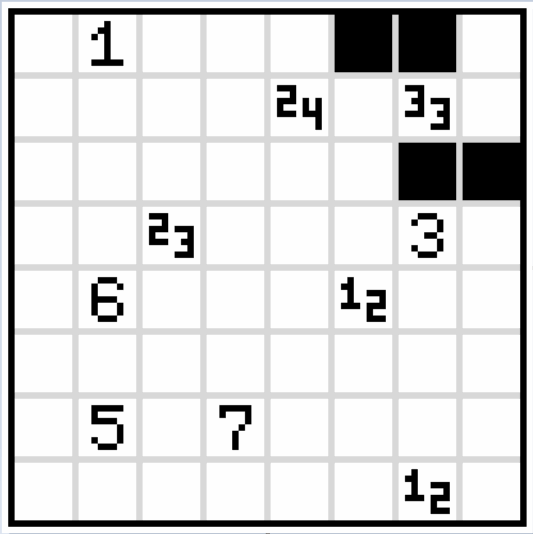Solution

I started from the top right corner and essentially proceeded counterclockwise around the board, ending in the bottom right corner.
Step by step deductions
Firstly consider the $3,3$ in the top right. Since there are only 8 cells around there, they must be two runs of 3 separated by two single blank cells.
The blank cells can't be above and below the middle, as that would contradict the $3$ below. They can't be top left and bottom right, as that would isolate the L-shaped run of 3 in the corner. Then we can fill in some unshaded cells around the $3$ below; after that the blank cells can't be top right and bottom left, as that would isolate some shaded cells on the right. So the blank cells are on the left and right, and now we've completed both the $3,3$ and the $3$ below it.
Now consider the $2,4$ to the left of that. We've already got
two shaded cells separated by a blank one, so we can definitely continue those shaded runs to at least length 2 going left. The top run can't be the length-2 one, as that would isolate the top shaded edge, so that's the length-4 one and the length-2 one along the bottom.
A few short deductions now:
The row of four shaded cells below $2,4$ and $3,3$ can only connect in one way: another shaded cell must be below.
The eight cells around the $2,3$ are divided by the $6$ in the bottom left and the blank cell in the top right, leaving two runs of 3. One of those must be completely shaded and the other two-thirds shaded; anyway we can shade the central cell of each one.
Looking at the $1$ at the top, we can't leave both cells to its right blank, as that would isolate the shaded top row. So the shaded cell there must be bottom right and all the others are blank.
Again the run of shaded cells from the top can only connect in one way.
Now consider the $6$.
There's a continuous run of 6 shaded cells around it, which must be everything except the cell with $2,3$ written in it and one of the ones next to that. So we can fill in 5 right away.
Since exactly one of those cells between both the $6$ and the $2,3$ is shaded, the other one to the right of $2,3$ must be shaded. Avoid a 2x2 square there. Now we've got the 1 for the $1,2$ while the 2 must be two of the three cells below it.
Meanwhile, for the $5$ in the bottom left,
we've already got the 3 above shaded, and at most one on the right can be unshaded (because of the $7$), so the bottom and bottom-left cells are unshaded and the right one is shaded.
For the $7$,
if the top-right and right cells are both shaded, then we're cut off from further advance to the right on all three rows there, so it can't be connected. Contradiction, so one of those two is the unshaded one, and we can shade the other four. That enables us to fill in everything to the left.
Finally, if the one just right of the $7$ is the unshaded one, then we can fill in above and to the right of that, but then there's no way of getting the $1,2$ and having everything connected.
So it must be the top-right one that's unshaded, and then everything else in the bottom right follows easily.
Illustration






